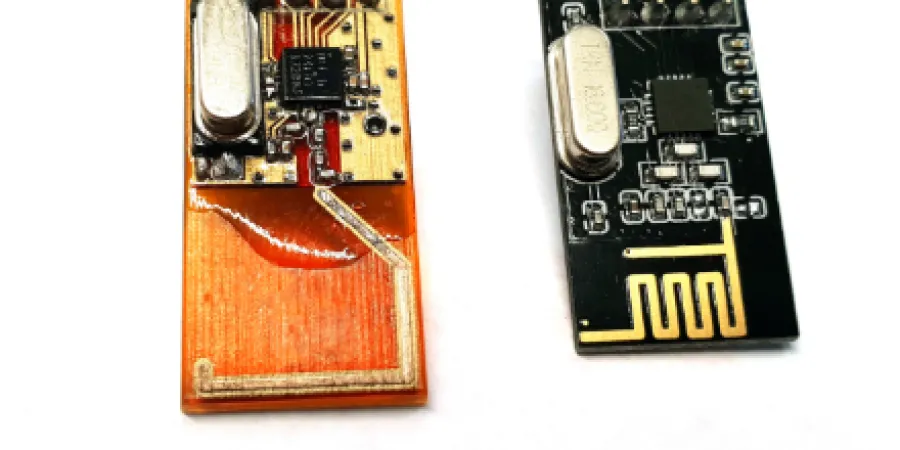In First, Israeli Company Develops Fully Functional 3D Printed IoT Communication Device
Using its DragonFly Pro 3D Printer, Nano Dimension said it had completed the print, assembly and testing of the prototype IoT transceiver device in approx. 18 hours – 90% faster compared to traditional devices
IsraelDefense
| 30/04/2019
Israel-based Nano Dimension announced Tuesday that it has created the first fully functional 3D printed communication device.
This first-ever additively manufactured (3D Printed) IoT device enables companies and research institutions to create and test their “smart” products and other prototypes faster and more easily than ever before, the company said in a release.
Using its DragonFly Pro 3D Printer, Nano Dimension said it had completed the print, assembly and testing of the prototype IoT transceiver device in approx. 18 hours – 90% faster than traditional (non-3D printed) devices which typically take about 14 days or more.
The remote-control type IoT device, sized less than a dollar coin (16 x 33 x 1.6mm), is currently in its qualification phase and Nano Dimensions’ experts anticipate that it could be developed into a two-way communication device (transmitter and receiver).
According to Amit Dror, CEO of Nano Dimension, “An ever-greater emphasis is being placed on smart cities, smart buildings, smart homes and smart products by industries and consumers alike. Our solution enables companies to speedily trial and finalize their prototypes in just one day without compromising on quality or performance. They no longer have to wait over a fortnight to understand whether their smart device works or not. This ultimately increases product and cost efficiencies and reduces time to market, which means that the consumer can enjoy the benefits of these products faster than ever before.”
Using its DragonFly Pro 3D Printer, Nano Dimension said it had completed the print, assembly and testing of the prototype IoT transceiver device in approx. 18 hours – 90% faster compared to traditional devices
Israel-based Nano Dimension announced Tuesday that it has created the first fully functional 3D printed communication device.
This first-ever additively manufactured (3D Printed) IoT device enables companies and research institutions to create and test their “smart” products and other prototypes faster and more easily than ever before, the company said in a release.
Using its DragonFly Pro 3D Printer, Nano Dimension said it had completed the print, assembly and testing of the prototype IoT transceiver device in approx. 18 hours – 90% faster than traditional (non-3D printed) devices which typically take about 14 days or more.
The remote-control type IoT device, sized less than a dollar coin (16 x 33 x 1.6mm), is currently in its qualification phase and Nano Dimensions’ experts anticipate that it could be developed into a two-way communication device (transmitter and receiver).
According to Amit Dror, CEO of Nano Dimension, “An ever-greater emphasis is being placed on smart cities, smart buildings, smart homes and smart products by industries and consumers alike. Our solution enables companies to speedily trial and finalize their prototypes in just one day without compromising on quality or performance. They no longer have to wait over a fortnight to understand whether their smart device works or not. This ultimately increases product and cost efficiencies and reduces time to market, which means that the consumer can enjoy the benefits of these products faster than ever before.”



